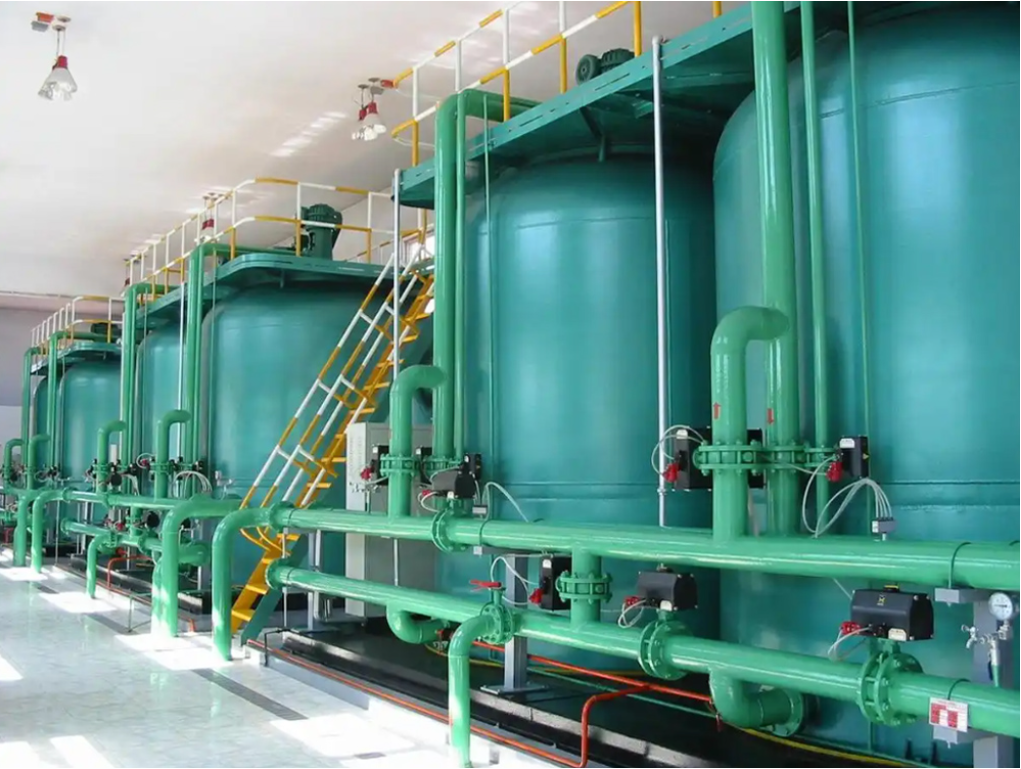The Application of Dual/Multi-Layer Media Filter in the Oilfield Wastewater Treatment
China's demand for petroleum has remained in high level continuously. During the process of oil extraction, particularly in the secondary and tertiary recovery stages, large amounts of oilfield produced water are generated., This type of wastewater is characterized by high oil content, high salinity, high suspended solids, and high concentrations of chemical additives. These substances make it difficult to treat and purify. Wastewater treated by traditional methods often fails to meet the high standards required for water injection in low-permeability and ultra-low-permeability oil fields. Discharging or ineffectively reusing such wastewater not only wastes water resources but may also cause severe damage to formations and ecosystems. Therefore, as water intensifies and environmental awareness increases, treating oil extraction wastewater as a source for water injection and achieving its resource utilization has become an inevitable trend in current oil extraction wastewater treatment.
Among the various technologies for oilfield wastewater treatment, filtration technology, as an effective end-of-pipe treatment method, has garnered widespread attention. Filtration technology achieves efficient oil-water separation by using strongly hydrophobic and oleophilic materials, porous oleophilic-hydrophobic adsorption materials, or membranes with selective permeability. Among these, deep-bed filtration technology has been widely applied in advanced wastewater treatment and reuse projects due to its simple process flow and effective treatment performance. However, traditional single-layer media filter face issues such as susceptibility to clogging, short filtration cycles, and poor backwashing effectiveness when treating oily-wastewater, which limit their further application.
To solve these issues, researchers have developed a novel high precision filter with a dual-layer or multi-layer filtration structure. This design not only enhances the filter's contaminant retention capacity but also extends the filtration cycle and reduces the frequency of backwashing, thereby lowering operation costs.

On-Spot Dual/Multi-Layer Media Filter
In the treatment of oilfield wastewater, the dual-layer/multi-layer media filter has demonstrated remarkable advantages:
Firstly, it offers high filtration precision, with a removal efficiency of over 98% for suspended solids larger than 2㎛, ensuring stable effluent quality.
Secondly, the filter exhibits significant effectiveness in treating oily wastewater, reducing both oil content and suspended solids concentration to less than 5 mg/L in the effluent, fully meeting the requirements for waste injection.
Additionally, the filter boasts a high treatment capacity, with a single unit capable of processing 5 to 150 m³/h. It can be operated in series or parallel based on actual needs, offering great flexibility.
Beyond its efficient treatment capacities, the dual-layer/multi-layer media filter is also compact in structure, fully equipped, stable in operation, simple to operate, thorough in backwashing, and easy to maintain. These features have led to its widespread application in oilfield wastewater treatment and consistent positive feedback from users.
Furthermore, this filter is also suitable for advanced treatment of other industrial wastewater, such as metallurgy, chemical engineering, and textiles. Its broad application prospects and prominent economic benefits make the dual-layer/multi-layer media filter an important equipment in the field of industrial wastewater treatment.
In summary, the dual-layer/multi-layer media filter has demonstrated remarkable advantages and promising application prospects in oilfield wastewater treatment. With growing environmental awareness and intensifying water scarcity, this efficient, energy-saving, and environmentally friendly wastewater treatment equipment will attract increasing attention and wider application.
